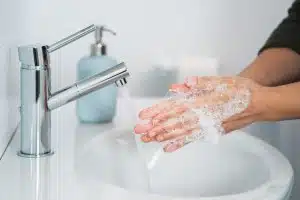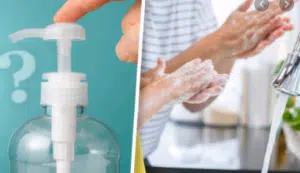
Sanitiser, together with a PCR-to-fly travel test, helps us stay away from COVID-19. Besides, hands are the areas of our body that interact most with other people, things, and ourselves. That’s why cleanliness is such an essential part of healthy living. The same-day STD Home Testing needs healthy living. Think of how much you casually touch your face during the day. Get STD PCR Tests now to confirm that you are clean. Head-to-toe hygiene is a high priority for many individuals.
There’s also an emphasis on keeping the hands safe to stop disease-carrying germs from spreading. Here, an effective wash is essential. You’re still ahead if you’ve used a steriliser or chosen soap and water cleaning. Besides, both effectively reduce the spread of certain viruses and bacteria. But is one a more successful solution than the other? Or, how does the effectiveness of a sanitiser compare to that of washing?
Which is Better?
How likely would you recommend sanitiser over other hand hygiene options? To compare which approach is better for holding germs at bay, read through the next sections to learn why doctors prefer soap and water over cleansers.
Sterilisers can help kill most germs. However, COVID-19 viruses are more easily destroyed, even with soap and water separated from the palms. Many households and workplaces have big bottles readily available. In most cases of people using any disinfectant, a sink and soap are not usable. After all, it is better to consider a disinfectant a close substitute. Why? Or what should a pack of sanitiser replace?
All health professionals agree that adequate and regular washing is the norm for ensuring hygiene. That’s why using water and soap is even more thorough than using these products from various brands. Cleansers can destroy viruses and other bacteria. Nevertheless, a steriliser doesn’t ‘clean’ your hands. However, soap and water do it all.
Steriliser doesn’t absorb contaminants and particles. The cleanser removes germs and separates them. Plus, the right one can clean your skin.
What matters in centres?
No matter the cleaning method you choose, the technique matters. Whether you’re using soap and water or a disinfectant, if you don’t obey the right procedures like getting a PCR fit-to-fly travel test, you could as quickly get infected. One of the most common infections is the family of diseases revealed by STI or STD Home Tests. The soap or solution used is less important than how you wash your hands. Experts insist on scrubbing for at least 20 seconds with soap and water. Thus, applying soap on the palms and an almost immediate rinse won’t cut it.
Alternatively, you can use a disinfectant to try to clear yours. And you may be shocked to hear that the guidelines are much stricter for correct sanitiser use. The CDC cites a three-step method. First, add the cleanser, then rub your palms together to cover all surfaces. After applying the steriliser, knead until they are thoroughly cleaned.
Are you a frequent user of hand gel products? If so, you should rub your right palm across the back of the left side with interlaced fingers (and vice versa). Next, rub palm to palm with interlaced fingers. Then, rub your finger back to opposite palms with interlaced fingers. That’s how simply you can use a disinfectant. These solutions, dependent on alcohol content, work by breaking down the germs of Fit to Fly travel test COVID-19. You don’t only need to get it, but the alcohol has to stick on long enough to function. Also, clean your hands with sanitiser before they’re thoroughly air-dry. Here, it means adequate exposure time. The exposure period always needs to be over 20 seconds.

